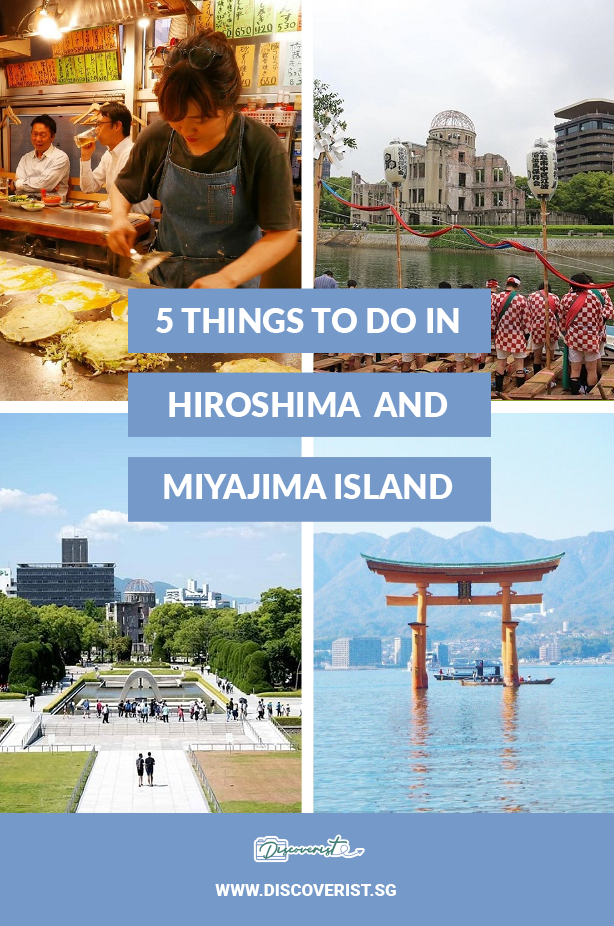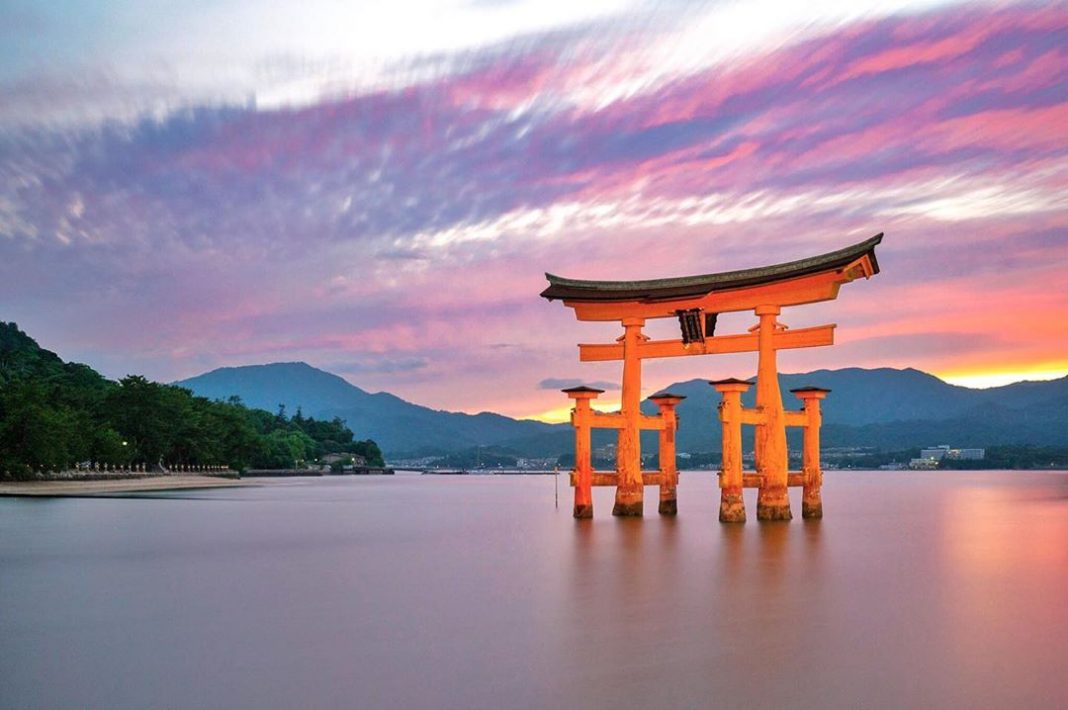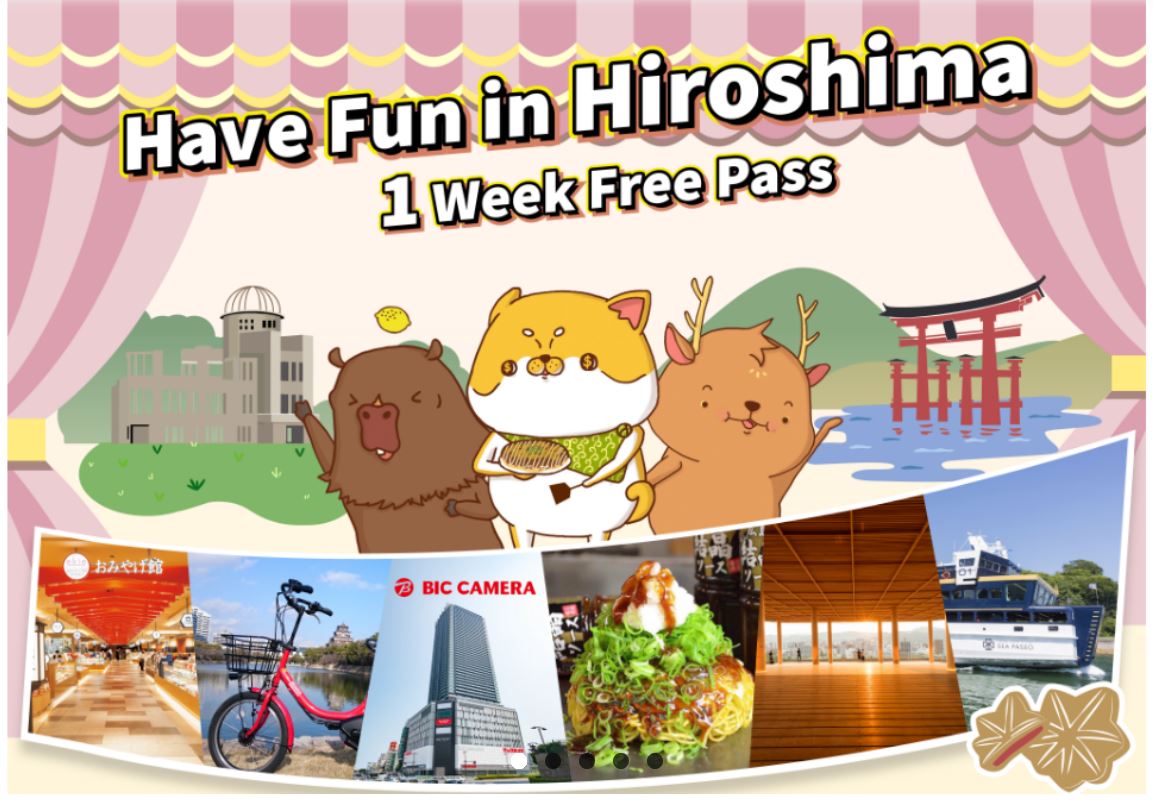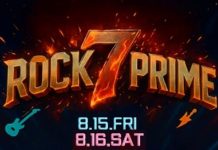Inspired by a recent conversation with friends about Singaporeans’ all-time favourite destination in Asia: Japan, I realised that Hiroshima is often overshadowed by Osaka and Kyoto. Sadly, most would remember Hiroshima as the Japanese city that was completely destroyed by the U.S. atomic bomb in 1945 to bring World War 2 to an end. And the widely held belief that there’s nothing more to discover other than the sighting of old relics.
Fast forward over seven decades later, Hiroshima is a hypermodern city rebuilt from the ashes and is the next up-and-coming holiday destination. The locals’ wish for vacationers to scratch the surface of post-war Hiroshima and discover that there is plenty to experience, ranging from history, culture, nature and food.
1. Best Hiroshima-style Okonomiyaki at Okonomi-Mura (Village of Okonomiyaki)

Okonomiyaki is a literal combination of two Japanese words: Okonomi meaning “what you like”, and yaki meaning “grilled”. It is a Japanese savoury pancake with customizability, which is considered rare in Japan’s culinary tradition because the Japanese chefs always know best (think Omakase). But for okonomiyaki’s case, you can customise it to your taste with the condiments they offer.
In Japan, there are two types of okonomiyaki – the Osaka version and the Hiroshima style.
Unlike Osaka’s rendition where the ingredients are mixed in a batter with cabbage, flour and eggs, then cook it all together on the griddle; the Hiroshima-style okonomiyaki is grilled and stacked in layers (think savoury layered omelette). These layers trace the city’s post-war recovery, making the dish a cultural food icon. After the war, food supplies were limited to vegetables and flour, so the hungry population began to make the most out of the available resources, using metal sheets from the ruins as griddles, they started cooking pancakes.

Throughout Hiroshima, there are plenty of okonomiyaki restaurants. Often described as Hiroshima’s soul food, there is even a plaza dedicated to Hiroshima-style Okonomiyaki. Enter Okonomi-mura (Village of Okonomiyaki), a three-storey building with 25 okonomiyaki stalls to try. And you’re considered lucky if you can find a seat at one of the stalls and watch the spatula-wielding artists/chefs cook up a storm.
In my opinion, no trip to Hiroshima is complete without a visit to Okonomi-mura and walk out smelling like the okonomiyaki.
Address
5-13 Shintenchi, Naka, Hiroshima 730-0034, Hiroshima Prefecture
Opening Hours
Daily from 11 AM to 2 AM
Local Tip: Cash is preferred here. Credit cards are not accepted. Average cost per meal is around SGD$20 (1500 Yen)
2. Japan’s First Pizza Vending Machine
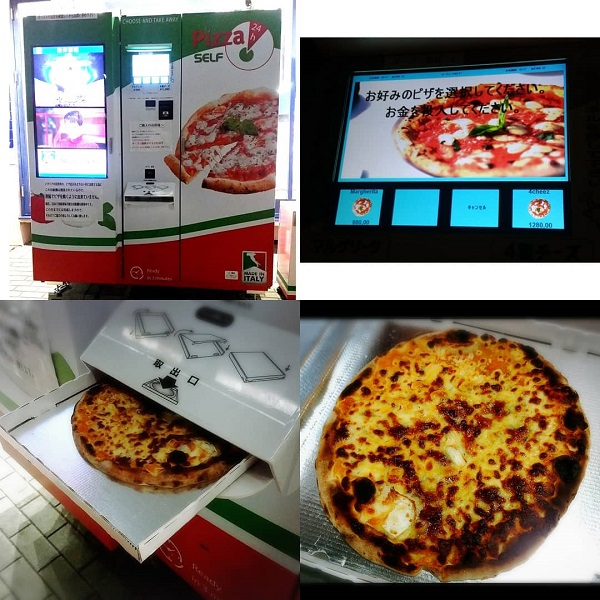
Vending machines are almost everywhere in Japan, selling snacks, alcoholic beverages, and even daily amenities, so what’s new? How about a large vending machine with an in-built oven that takes your pizza order? Touting to be the first of such vending machine in Japan, this 24-hour Pizza vending machine in Hiroshima has become a hit among the locals, and I suspect it is because of the smell of the freshly baked pizza wafting through the machine! Located right next to a video and CD rental shop, this vending machine produced oven-baked pizzas in just 5 minutes, it is an ideal complement for a movie night. There are only two flavours of pizzas to choose from: Margherita pizza for 980 yen (SGD$12) and 4-cheese pizza for 1,280 yen (SGD$16).
Location of the vending machine
Tsutaya Kusunoki Branch / TSUTAYA楠木店
Hiroshima-ken Hiroshima-shi Nishi-ku Kusunokicho 4 Chome-9-26
Opening Hours
Daily 24hrs
3. A-Bomb Dome
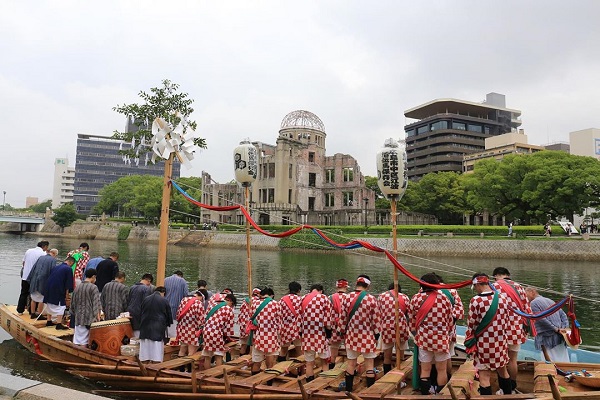
The A-Bomb Dome building is a stark reminder of mankind’s capacity for self-destructiveness. On 6 August 1945 at 8:16 AM, the first atomic bomb in human history was dropped in Hiroshima. The city’s former old Industrial Promotion Hall was directly below the bomb blast. However, it did not collapse into rubble like the rest of the city. The dilapidated iron-and-concrete dome stood eerily next to the river ever since that fateful morning.

Five decades later, it became a UNESCO World Heritage site in 1996 and has been visited by millions of visitors annually. Preservation works have been carried out on the building with goodwill donations from Japan and abroad. Today, A-Bomb Dome has become a symbol for the abolition of nuclear weapons and a plea for ever-lasting peace throughout the world.
Every year, a ceremony will be held near the site where thousands would gather at 8:15 AM on 6 August, a minute before the bomb blast, for the striking of a peace bell. Hiroshima commemorates the world’s first nuclear attack for the furtherance of peace.
To stand just 600 metres below where the atomic bomb went off, eyes transfixed on the A-Bomb Dome, is a strange and powerful revelation on the precious nature of peace and we should never repeat the evil of war.
Address
1-10 Otemachi Naka-ku, Hiroshima 730-0051, Hiroshima Prefecture
Opening Hours
Open 24hrs
4. Hiroshima Peace Memorial Park and Museum
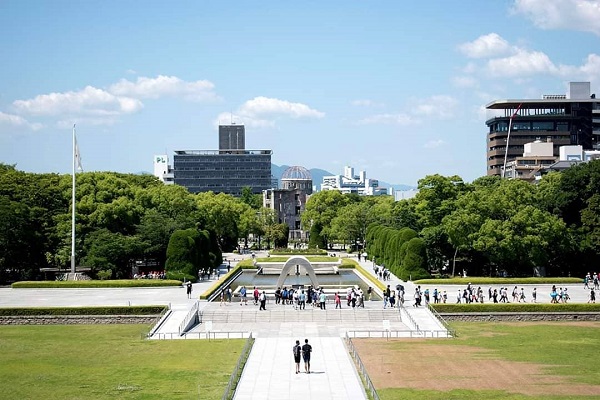
It is impossible to miss the Hiroshima’s Peace Memorial Park located just 20 minutes away from Hiroshima station. A hollow arch-shaped monument sits right in the center of the park. The monument consists of a stone chest which keeps a record of the victims who died from the atomic tragedy. If you walk closer to the monument, you will be able to see the Flame of Peace and A-Bomb Dome through the arch. Until the world is free of nuclear weapons, the flame is kept burning.
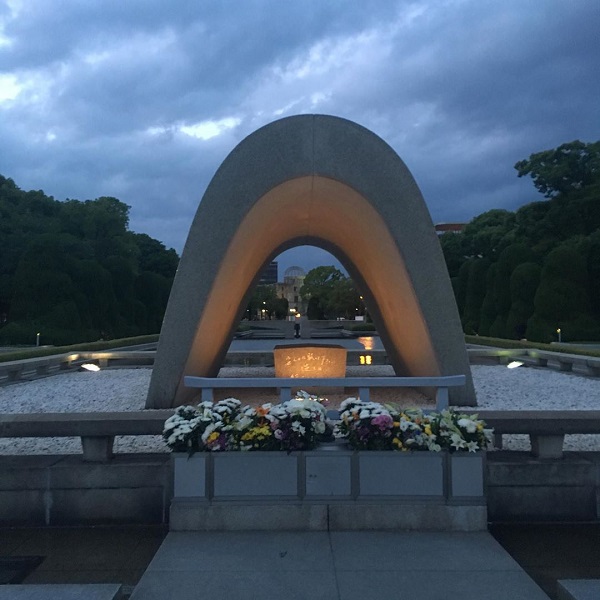
The area of what is now the Peace Memorial Park used to be the city centre and was home to approximately 6,500 people. Several years after the bomb, it was decided that the area would not be redeveloped but instead devoted to peace memorial facilities.
The park’s main facility is the Peace Memorial Museum. Consisting of two buildings, the museum surveys the history of Hiroshima and the advent of the nuclear bomb.
A visit to Hiroshima is also a lesson on humanity that we are capable of both destruction and peace.
Address
1-2 Nakajimacho, Naka, Hiroshima 730-0811, Hiroshima Prefecture
Opening Hours
Hiroshima Peace Memorial Park is open 24hrs
Hiroshima Peace Memorial Museum is open daily from 8:30 AM to 6PM
5. Take a day trip to Miyajima Island also known as the Shrine Island
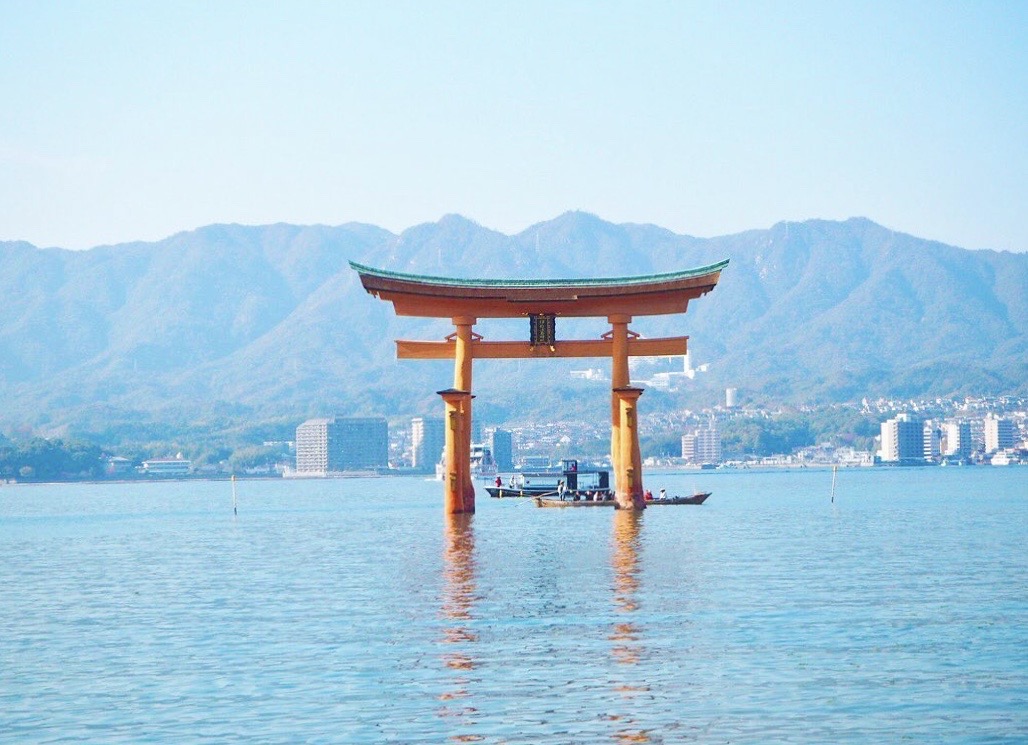
I’d be lying if I said this is not what draws me to Hiroshima initially. One of the top three prominent scenic spots in Japan – Miyajima Island is less than an hour away from Hiroshima.
Miyajima means shrine island, and rightfully so as it is famed for its atmospheric Itsukushima Shrine and the giant “floating” O-torii gate.
Japan’s national treasure, the Itsukushima Shrine is also a UNESCO World Heritage site. Built in the 12th century, Itsukushima Shrine consists of several buildings which were constructed partly above the sea and connected by wooden boardwalks. The locals called it the magnificent “floating” shrine.
Set against the backdrop of lush green misty mountains, it is a picturesque sight and no matter where you stand, there are plenty of unique photo opportunities.
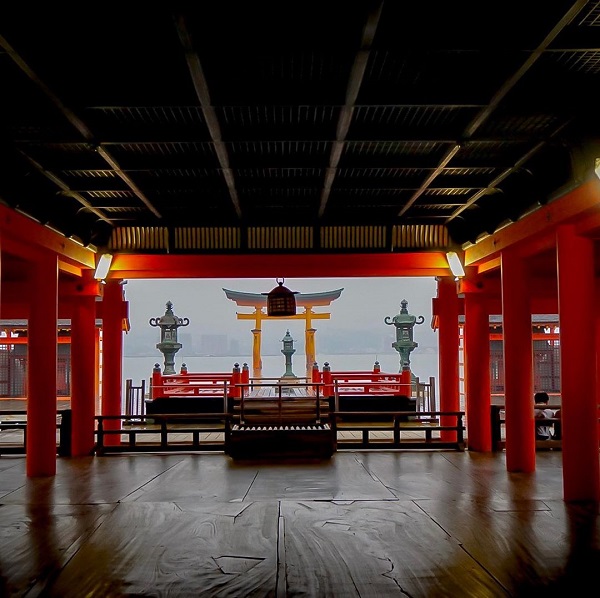
Depending on the sea conditions, visitors would be able to walk on the seafloor to see the giant O-torii gate up-close when the tide is out. But if it’s high tide, the best spot to take in the views would still be at the Itsukushima Shrine.
To sum up the experience here in one word: Serenity.
Address
1-1 Miyajimacho, Hatsukaichi 739-0588, Hiroshima Prefecture
Opening Hours
Tuesday – Sunday: 8:30 AM to 5 PM (Close on Mondays)
Admission to the Itsukushima Shrine will cost ¥300 per adult and ¥200 for high school students. Free admission for children (6 years old and below). Viewing of the O-Torii Gate is free.
Travelling to Hiroshima
Hiroshima is only 1 hour and 42 minutes from Kyoto by the fastest Shinkansen. From Osaka, the train journey takes 1 hour 33 minutes. It is highly recommended to depart from Osaka to Hiroshima, instead of travelling westward from Tokyo (as it will take up to 4 hours). So, check if you’re landing at Kansai International Airport then make your way to Osaka station.
If you only have 24 hours and to make the most out of your time, you can try going on a day trip from either Kyoto or Osaka.
Getting Around Hiroshima
There is a one-day pass available in Hiroshima, you can purchase it at the platform outside JR Hiroshima Station.
For those who are planning to a make pit stop at every city in western Japan, it is cost-effective and fuss-free to use a JR West Pass as you don’t have to worry about the logistics of buying the different types of train tickets. With JR West Pass, you will have unlimited access to the Sanyo Shinkansen (between Shin-Osaka and Hiroshima), limited express, rapid service, local trains and JR ferry to Miyajima.
Top image by drburaks via Instagram
Make the most out of your trip with Have Fun in Hiroshima Pass 1 Week Free Pass
Enjoy 3 exciting experiences in Hiroshima, including Hiroshima Port-Miyajima Port High-speed ship, Orizuru Tower, Hiroshima Okonomiyaki!
- Start your pass within validity period: 90 days after purchase date
- Visit all the facilities or redeem the coupons within 1 week
- Choose among the available attraction admission, transfer pass, outdoors experience, shopping / food coupon. Check out the list of experiences here: https://www.tripellet.com/hfhiroshima/en
[su_button url=”https://attractions.changirecommends.com/ticket/product/Have-Fun-In-Hiroshima,-Japan/Japan/3416?productName=Have%20Fun%20In%20Hiroshima,%20Japan&productId=3416″ target=”blank” style=”soft” background=”#8b3fc0″ size=”4″ radius=”round” icon=”icon: hand-o-right”]Book Have Fun in Hiroshima Pass 1 Week Free Pass here![/su_button]
➯ Did you like this post? Pin it and share it with others!
